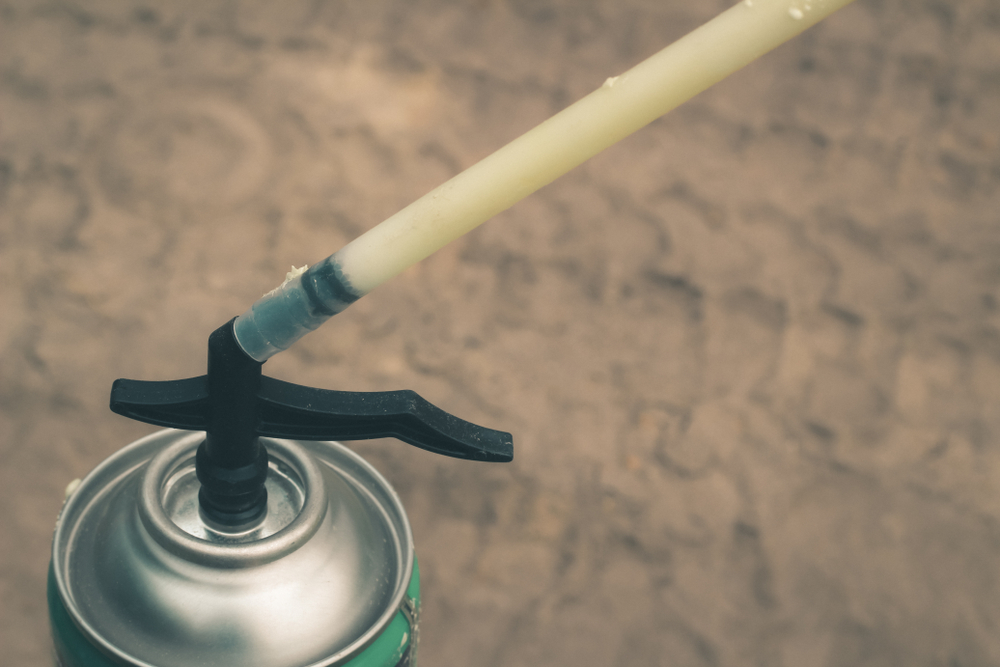The areas you are insulating, the brand of insulation, and where you live can all impact how much insulation you’ll need. Ensuring you have the proper amount can mean more comfort for you and your family, as well as making your home more energy efficient, which translates into lower utility bills for you.
The following advice will help you understand how much spray foam insulation you’ll need to insulate your home.
What’s The Standard Spray Foam Can Coverage?
Before you can get down to business insulating your home, you need to know how much spray foam is required. But to find that answer, you need to start with the coverage available in the can, right?
You can find different sizes available with a quick internet search, and if you are working with a contractor, they may be able to purchase spray foam insulation in even larger quantities. Let’s start with the standard spray foam can that can be found at your local big box home improvement store.
A 12 oz. Gaps and Cracks Insulating Spray Foam found at Home Depot is generally used for sealing smaller cavities left behind by another insulation type. According to the manufacturer, the spray foam is the equivalent of 7 quarts or 22 tubes of caulk.
Lowe’s carries a larger spray foam kit that yields approximately 200 board feet of foam insulation. And you can go even larger when purchasing from specialty sites. A 55-gallon bucket of closed cell spray foam will yield around 5000 board feet of converge!
Do Different Spray Foam Types Have Different Can Coverage?
Not all cans of spray foam insulation are the same. There are different types that have various qualities, densities, and uses. In this section, we’ll compare the coverage provided by a few of the popular types.
Open Cell Vs Closed Cell
Open cell spray foam insulation is made up of cells that are not completely encapsulated, hence the name. The open cells are softer and expand quite a bit upon application.
Contrastingly, closed cell spray foam consists of fully encapsulated cells that cannot be penetrated by air or moisture.
Open cell spray foam will go a lot farther in terms of application compared to closed cell. For instance, the 55-gallon bucket of closed cell spray foam we mentioned above yields roughly 5000 board feet of coverage. The same size bucket of open cell insulation will get you 16,000-21,000 board feet coverage — quite a difference!
High Density Vs Low Density
Since low density spray foam is open cell and high density spray foam is closed cell, the same ratios apply. Your low density insulation will give you more coverage per can or bucket than high density spray foam.
Anti-Pest Spray Foam Coverage
Pests such as insects or mice can chew their way through insulation made of cellulose or fiberglass. However, closed cell foam insulation is anti-pest because most vermin simply cannot break through. Due to the high density of anti-pest insulation, the coverage will not be as robust as with open cell spray foam.
How Many Square Feet Does A Spray Foam Kit Cover?
Foam insulation — with the same R-value as that sprayed from truck-mounted machines — can be installed using a spray foam kit. A dispensing spray gun, cone spray nozzles, fan spray nozzles, a gun hose, quick-cure polyurethane foam, an ISO (A) cylinder, and a Polyol (B) cylinder are typically included in kits.
Most people, even those with limited experience in home remodeling, can easily follow the directions. Open and closed spray foam kits are the two types available on the market.
Kits come in various sizes, generally ranging from 200 to 600 board feet of coverage per kit. A kit featuring open cell spray foam will go further.
How Do I Calculate How Much Spray Foam I Need?
There are several insulation calculators available on the internet to help you decide how much spray foam you need. But if you don’t mind doing a little math, you can figure out the number of kits needed by your self.
- Start by measuring the Length x Height of the wall that you need to fill with insulation.
- Subtract the square feet of any doors or windows located along the wall.
- From that number, you will need to subtract 6% for the studs because you won’t be spraying those areas.
- Once you have that total, you will need to multiply it by 3.5 if you have a 2″x 4″ wall or multiply it by 5.5 if you have a 2″x 6″ wall.
- The total is the number of board feet you will need to complete the wall.
You can also calculate how much spray foam you need by where you are insulating.
Crawl Space or Basement Ceiling: Calculate in board footage. If your crawl space is 20’x30’, then you need 600 sq ft of spray foam insulation.
Metal Buildings: Start by finding the linear footage of your building, then multiply that by the wall height.





